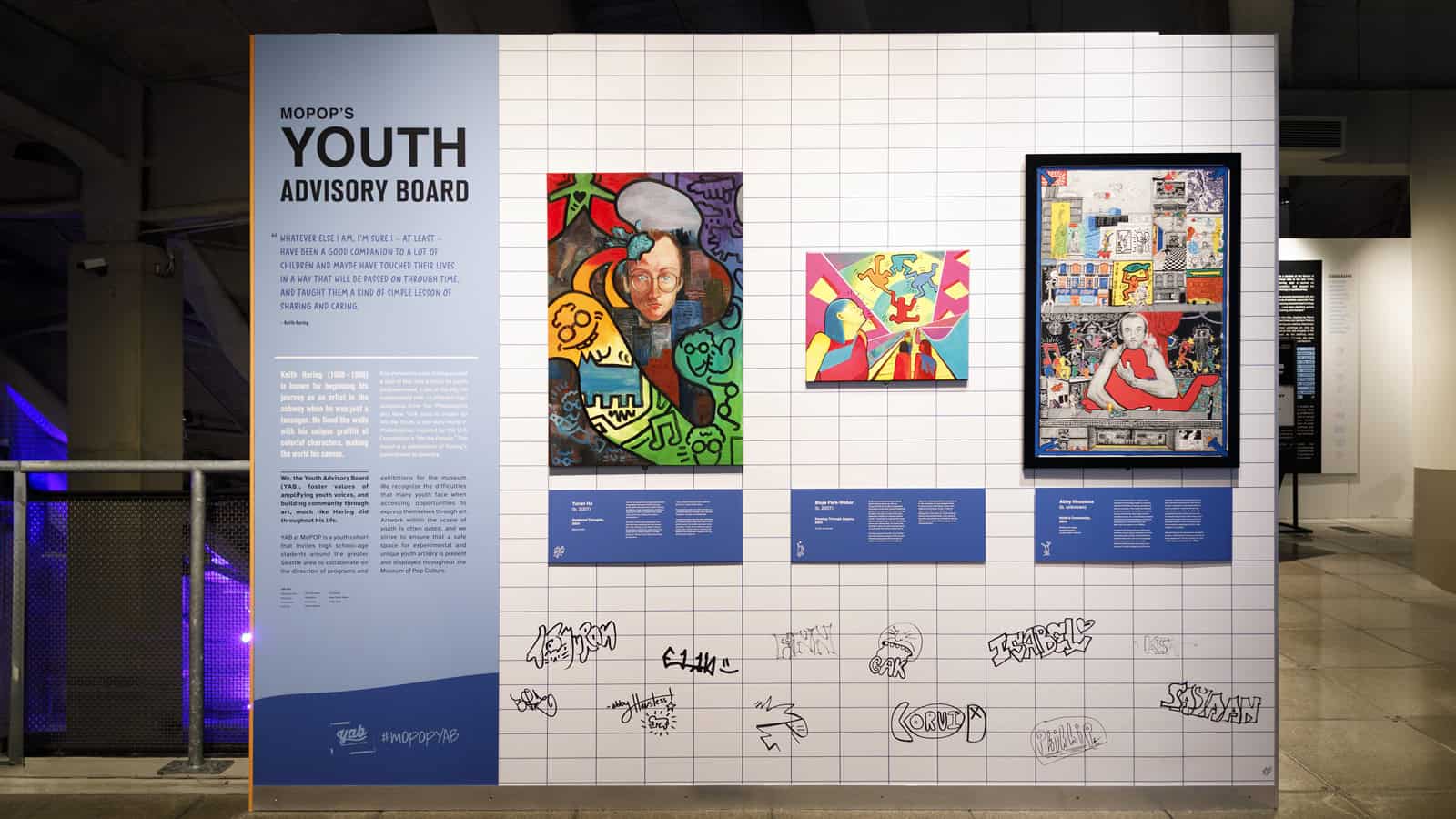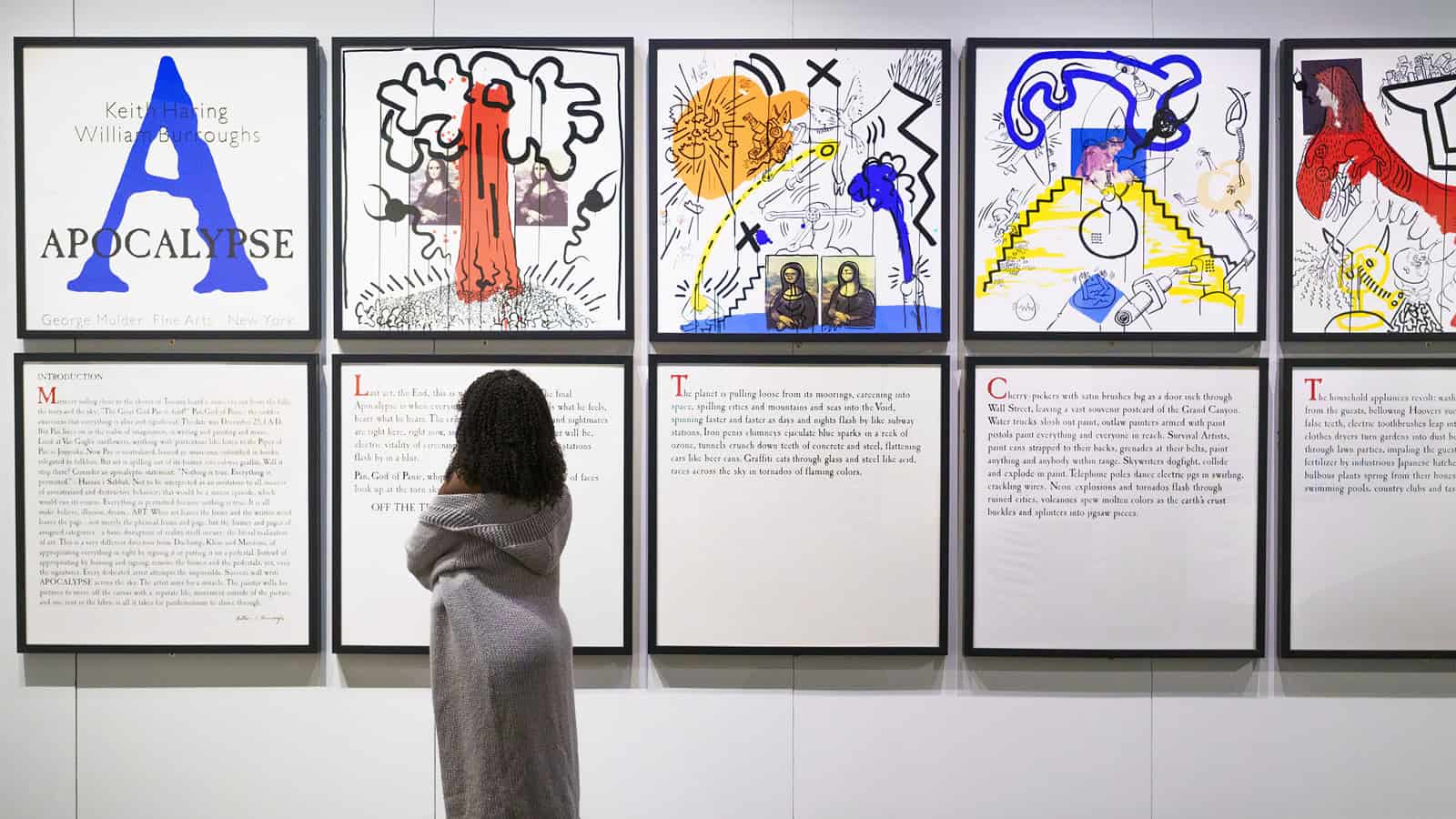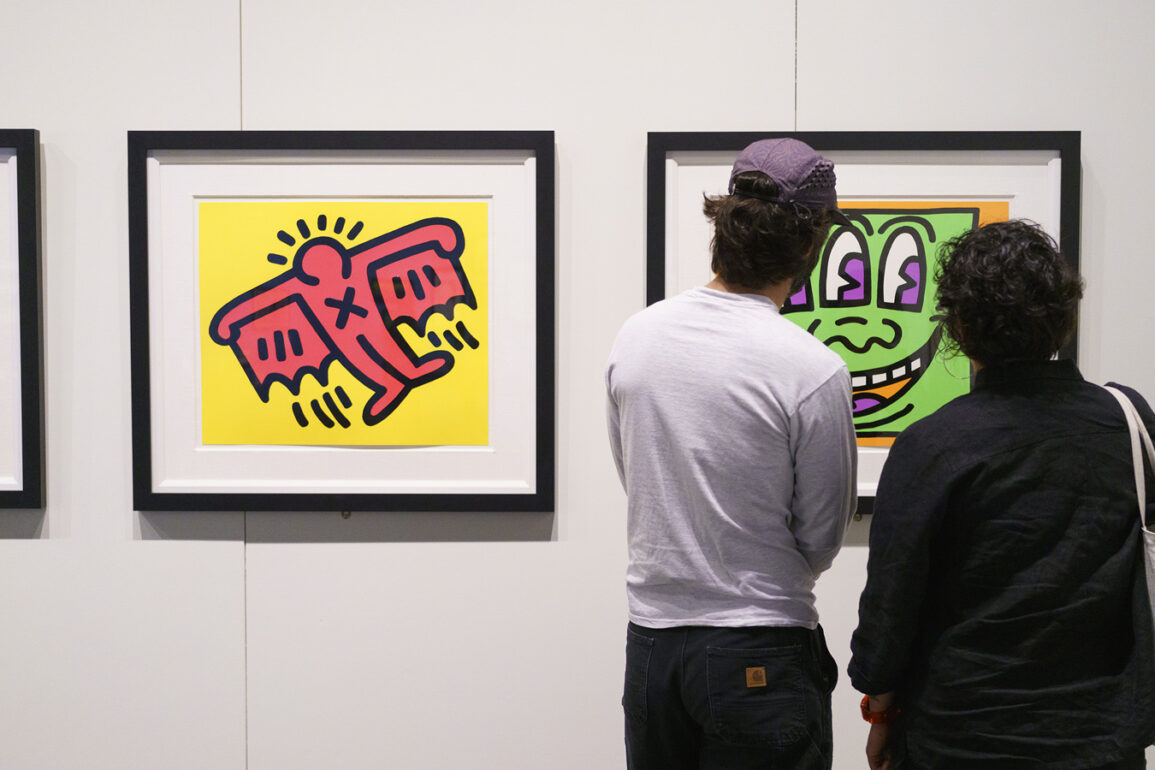The recent opening of Keith Haring: A Radiant Legacy, running through March 23 at the Museum of Pop Culture, taps into Seattle’s current public art zeitgeist. On the heels of this summer’s Belltown Mural Festival, which kicked off the addition of 30 new murals around the city, the exhibition feels like a strong connector between Seattle and the art world at large. It also taps into the city’s ongoing commitment to social justice — a lifelong objective for the show’s titular artist.
“While Keith Haring: A Radiant Legacy is a traveling exhibition, MoPOP has infused it with distinctly Seattle elements,” says Amalia Kozloff, senior curator at MoPOP. “Our Youth Advisory Board curated a special section featuring Haring-inspired works by local young artists, showcasing our city’s vibrant youth art scene. We’ve also incorporated a dedicated space highlighting Seattle-based organizations like Lambert House and Pride Asia, which continues Haring’s legacy of social justice.”

MoPOP’s Youth Advisory Board curated a special selection of art by local young people, inspired by Haring’s work.
Photo courtesy of the Museum of Pop Culture
The MoPOP team has also curated the space, using the artist’s iconic color palette — and a soundtrack of both popular and underground tracks from 1980s New York — to create a distinctive art-going experience. “These unique additions transform A Radiant Legacy into a distinctly Seattle experience, merging Haring’s universal appeal with our city’s local flavor and commitment to social change,” Kozloff says.
Most people know the late Haring for his pop art. Working in a simplified visual language, his pieces are bright, youthful, and easy to understand or interpret — a relieving force in an industry where obscurity or loftiness often alienates the average person. For Haring, who moved to New York in 1978 to study at the School of Visual Arts, the accessibility of art was inherent in his work from the beginning.
He started out with graffiti, chalking figures on walls and in subway stations around the Lower East Side, eventually moving on to create larger installations, many of which addressed issues including the AIDS crisis (Haring died at the age of 31 due to AIDS-related complications in February 1990), nuclear disarmament, and LGBTQ+ rights. In 1986, Haring opened the Pop Shop in the SoHo neighborhood, selling affordable novelty items—such as buttons, T-Shirts, and bags — that allowed the average New Yorker to pick up a Haring.

The Apocalypse series is a 1988 collaboration between Haring and writer William S. Burroughs, produced the same year the former was diagnosed with AIDS.
Photo courtesy of the Museum of Pop Culture
“Keith Haring’s approach to democratizing art through his Pop Shop was truly revolutionary in the context of the 1980s art world,” Kozloff says. “At a time when fine art was often seen as exclusive and inaccessible to the general public, Haring boldly challenged this notion by creating a space where anyone could own a piece of his work. This move was radical because it blurred the lines between high art and popular culture, challenging the art establishment’s notions of value and exclusivity. Haring believed that art should be for everyone, not just wealthy collectors or institutions. By making his art accessible through everyday objects, he brought his messages of love, equality, and social justice into people’s homes and onto the streets, amplifying his impact as both an artist and an activist.”
Original items from the Pop Shop are on display in the exhibition, as are nearly 250 Haring artworks and objects. One section is dedicated to the artist’s friendship and working relationship with Angel Ortiz, also known as LA II (Little Angel), showing a selection of his work, both with Haring and as a solo artist. Ortiz was just 13 when he met Haring, but the two would become close collaborators until Haring’s death.
“Despite their age difference, the two formed a close bond and artistic partnership that had a profound impact on Haring’s work,” Kozloff says. “Ortiz’s intricate and dynamic tag style complemented Haring’s bold, graphic imagery, leading to a collaborative fusion that added new depth and energy to Haring’s pieces. This partnership introduced elements of street art and Latino culture into Haring’s work, expanding his visual vocabulary and connecting him more deeply to the vibrant New York City street art scene. The collaboration also reflected Haring’s commitment to mentoring young artists and his belief in the power of artistic exchange.”
Although his life was cut short at a young age, Haring deeply understood the potential of art to convey a message. Whether personal, political, or a commentary on culture, his visual communication was deeply rooted in his convictions. Sometimes a complicated message is best delivered, simple and relatable, through a striking image.

Keith Haring: A Radiant Legacy is now open at the Museum of Pop Culture. Featuring over 240 works of art and objects, the exhibition explores the life and legacy of one of New York’s most iconic pop artists.
Photo courtesy of the Museum of Pop Culture
“At MoPOP, we see Haring’s legacy as aligning perfectly with our mission to celebrate risk-takers and innovators in popular culture,” Kozloff says. “His fearless approach to creating and sharing art, his bridging of different cultural worlds, and his use of creativity as a force for social change all resonate with the stories we aim to tell in our museum. By showcasing Haring’s work and exploring his lasting influence, we hope to inspire our visitors to see how one person’s creative vision can have a far-reaching and enduring impact on society.”
Keith Haring: A Radiant Legacy is a Single Source Traveling Exhibition provided by PANART Connections, a Private Collection. The exhibition runs through March 23, 2025. Tickets here.
This post was originally published on this site be sure to check out more of their content.







